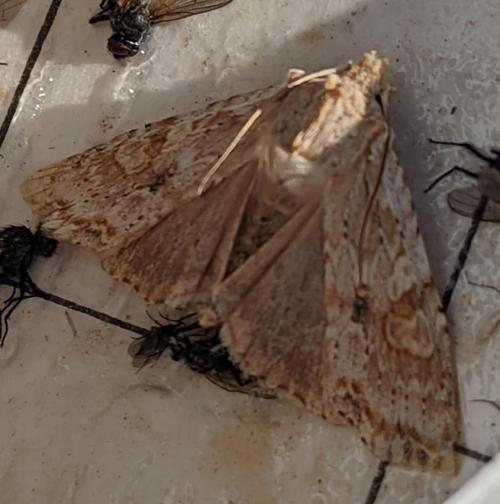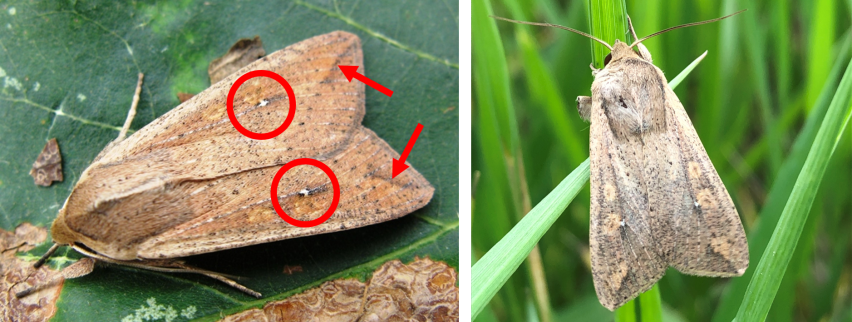Be aware of moth movement into the state
April 13th, 2022 by Ric Hanson

Photo 1. A species of pinion moth found in a true armyworm trap. Photo by Ryan McClintock.
(Lewis, Iowa) – Although it has been uncharacteristically cold recently, it is officially springtime in Iowa and many insects are coming to life. One of the first things the field crop entomologists do each year is coordinate the Iowa Moth Trapping Network. Aaron Saeugling, ISUEO Field Agronomist out of Lewis, reports usually, these traps catch the specific species we are interested in, but there can also be a lot of bycatch. It seems the past few years a particular look-alike continues to show up in the true armyworm (Mythimna unipuncta) traps placed around the state, and others not in the trapping network have noticed and contacted me for clarification as well.
True armyworm is a moth in the family Noctuidae, which is a family that contains a lot of “little brown moths” that may or may not be economically important for field crops in Iowa. I did not run these moths through an identification key, but I suspect the look-alikes are either Bethune’s pinion (Lithophane bethunei) or Nameless pinion (Lithophane innominata) moths (Photo 1). Neither are considered agricultural pests in Iowa and instead feed on broadleaf trees as larvae (caterpillars). You can learn more about their biology by clicking their scientific names.
True armyworm is an agricultural pest in Iowa (consumes leaf tissue), and we monitor true armyworm moths each spring to provide scouting information. True armyworm can be identified by the light brown forewings that each have a white spot in the center, plus there is a fading black line from the wing tip to the interior (Photo 2). As these moths migrate to Iowa from southern states this spring, we will provide weekly scouting updates on the ICM Blog.

Photo 2. Left: The features used to identify a true armyworm moth. The circles show the location of the white spots on the forewings, and the arrows point to the black lines that start at the wing tips and fade going into the center. Photo by Province of Manitoba. Right) A true armyworm moth. Photo by Ashley Dean. Note the range of color variation, with the identification features being prominent on both moths.





